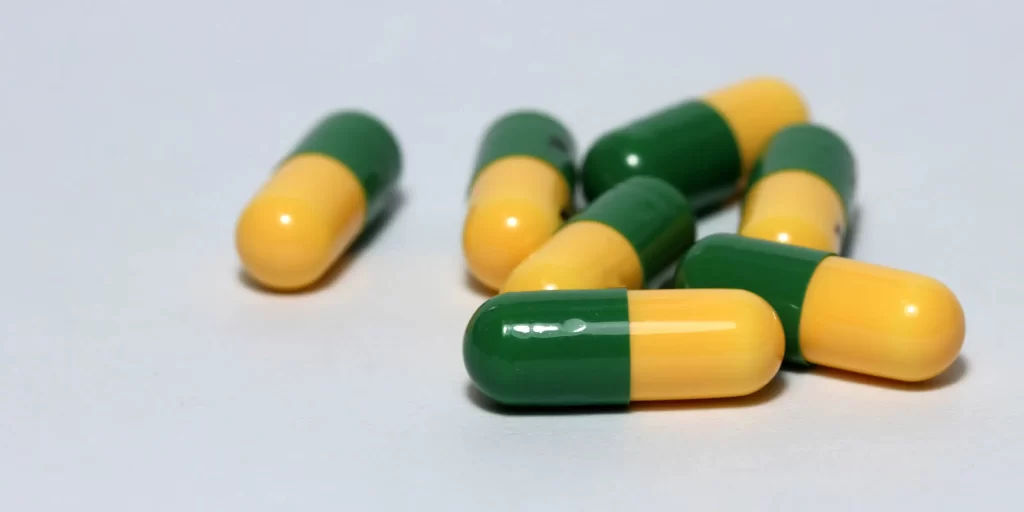Tramadol Overdose
Written by Renee Deveney
& Medically Reviewed by Dr. Trisha Sippel, PhD
Medically Reviewed
Up to Date
Last Updated - 6/17/2022
View our editorial policy
Tramadol is a pain medication that is commonly given to people with ongoing moderate or severe pain. Due to its opioid-like effects, when tramadol is used inappropriately or other than intended, it can be addictive due to its euphoric effects. When a person takes increased amounts of tramadol to feel those pleasurable effects, they can be at risk for overdosing.
Can You Overdose on Tramadol?
Yes. Overdose can occur if a person takes too much tramadol and the body can no longer function normally. This is more likely to occur in a person who takes tramadol chronically and other than prescribed. Someone who regularly uses tramadol, may develop a tolerance to the drug and no longer experience a “high” as easily. This may lead them to take more and more of the drug to feel the euphoric effect. If a person takes too much tramadol, they may overdose.
Tramadol Overdose Amount
How much tramadol it takes to overdose depends on the person who is using it, how much they will use or how often. There is not necessarily a set amount of tramadol that will cause an overdose, as it can have different effects depending on the person. Someone who has taken tramadol for a while and developed a tolerance to it may not overdose on the same amount of tramadol that a person who has never taken tramadol would. However, to avoid overdosing, the daily dose taken should never exceed the recommended 300 mg.
Risks of Mixing Tramadol and Other Drugs
Tramadol overdose is often associated with the use of other substances, but tramadol overdose alone can be fatal. Some of the substances often used by people at the same time as a tramadol overdose include:
- Xanax: Xanax is a prescription benzodiazepine that causes sedation. When combined with tramadol, which also has sedative effects, Xanax and tramadol can cause an overdose. This will usually occur at lower doses than either would cause an overdose alone.
- Alcohol: Tramadol should never be taken with alcohol. The risk of overdose on tramadol increases when it is mixed with alcohol.
- Gabapentin: Gabapentin is a seizure medication used to stop convulsions. When taken with tramadol, it may increase symptoms of dizziness, drowsiness, difficulty breathing, difficulty concentrating and confusion. Tramadol and gabapentin used together can lead to an overdose.
Tramadol Overdose Symptoms
Tramadol overdose can cause seizures and respiratory depression, to the point where a person may stop breathing. These are the most severe symptoms and can be life-threatening. A tramadol overdose is most often associated with difficulty breathing, slower breaths or long pauses between breaths.
Other tramadol overdose symptoms include:
- Irregular heart rate or rhythm
- Severe drowsiness
- Low blood pressure
- Loss of consciousness
- Vomiting
- Muscle pain or rigidity
- Limp or wakened body
- Changes in pupil size
- Pale or clammy skin
- Blue or purple tinted skin, lips or nails
- Hyperthermia (increase in body temperature)
Dangers of Tramadol Induced Serotonin Syndrome
In addition to having an opiate-like pain relieving mechanism, tramadol also has effects on certain neurotransmitters in the brain, which adds to its ability to induce euphoria. When tramadol is mixed with other medications that also affect neurotransmitters in the brain, it can have dangerous effects.
Serotonin syndrome occurs when there is too much of the neurotransmitter serotonin in the brain. Tramadol can cause serotonin syndrome, especially if it is combined with other drugs that affect serotonin levels in the brain such as monoamine oxidase (MAO) inhibitors or selective serotonin reuptake inhibitors (SSRIs).
The symptoms of serotonin syndrome, which can occur with tramadol use include:
- Convulsions or seizures
- Rise in body temperature
- Changes in blood pressure
- Muscle rigidity and pain
- Elevated heart rate
- Rapid breathing
- Agitation
- Hallucinations
- Coma
- Nausea
- Vomiting
- Diarrhea
Tramadol Overdose Signs
Knowing the signs of tramadol overdose can help save a person’s life. If a person experiences the signs of tramadol overdose, it is important to get help immediately. One of the major signs of a tramadol overdose is slow, uneven or distressed breathing. Tramadol causes respiratory depression and if too much is taken, it can slow breathing to the point where someone stops breathing altogether.
Some of the other acute signs of tramadol overdose include:
- Sleepiness progressing to stupor or coma
- Muscle flaccidity
- Clammy and cold skin
- Pupils getting smaller
- Slow heart rate
- Low blood pressure
Tramadol Overdose Prevention
Never take tramadol without a prescription. When prescribed tramadol as a pain medication, that person should carefully follow the dosing schedule to avoid having too much tramadol in their system at once. Tramadol pills should always be swallowed whole and never chewed or crushed.
If a person uses tramadol for an extended period of time, they may become tolerant to it. This means that the same dose of the drug will have no effect over time and it takes more of the drug in order to feel its effects. If this happens, an individual should speak to their physician about altering their dose. A person should never exceed the maximum dose of 300 mg per day, as anything higher than that increases the risk of overdose.
Tramadol Overdose Treatment
If a person is suspected to have a tramadol overdose, it is important that they get help right away. Call 911 or your local emergency services as soon as you can. It is not a good idea to try to treat an overdose at home. If you think someone has overdosed on tramadol, get professional help as soon as you can.
Tramadol overdose treatment will first involve making sure the person is breathing and establishing an airway if they are not. Tramadol overdose treatment may involve the use of the drug naloxone. Naloxone is an opioid receptor antagonist, so it binds to the same opioid receptors that tramadol does and prevents tramadol from binding them. Some may call this the tramadol overdose antidote since it helps to stop the effects of a tramadol overdose.
Once the person is stable, it is important they get the help they need to overcome their addiction and avoid overdosing again. There are many treatment options for opioid use disorders, including inpatient detox, therapy and medications that can help them stop using tramadol and avoid using it again in the future.
If you or a loved one are affected by a tramadol use disorder, The Recovery Village Ridgefield can help. To learn more about our comprehensive treatment plans, call The Recovery Village today to speak with a representative.
Sources
Food and Drug Administration. “Tramadol Prescribing Information.” Updated May, 2010. Accessed August 5, 2019.
Gioia, S.; Lancia, M.; Bacci, M.; Suadoni, F. “Two Fatal Intoxications Due to Tramadol Alone: Autopsy Case Reports and Review of the Literature.” The American Journal of Forensic Medicine and Pathology, December, 2017. Accessed August 5, 2019.
Drugs.com. “Drug interactions between tramadol and xanax.” Accessed August 5, 2019.
Drugs.com. “Drug Interactions between gabapentin and tramadol.” Accessed August 5, 2019.
Ryan, N.M.; Isbister, G.K. “Tramadol overdose causes seizures and respiratory depression but serotonin toxicity appears unlikely.” Clinical Toxicology (Philadelphia, PA), July 2015. Accessed August 5, 2019.
View Sources
Food and Drug Administration. “Tramadol Prescribing Information.” Updated May, 2010. Accessed August 5, 2019.
Gioia, S.; Lancia, M.; Bacci, M.; Suadoni, F. “Two Fatal Intoxications Due to Tramadol Alone: Autopsy Case Reports and Review of the Literature.” The American Journal of Forensic Medicine and Pathology, December, 2017. Accessed August 5, 2019.
Drugs.com. “Drug interactions between tramadol and xanax.” Accessed August 5, 2019.
Drugs.com. “Drug Interactions between gabapentin and tramadol.” Accessed August 5, 2019.
Ryan, N.M.; Isbister, G.K. “Tramadol overdose causes seizures and respiratory depression but serotonin toxicity appears unlikely.” Clinical Toxicology (Philadelphia, PA), July 2015. Accessed August 5, 2019.
Authorship






